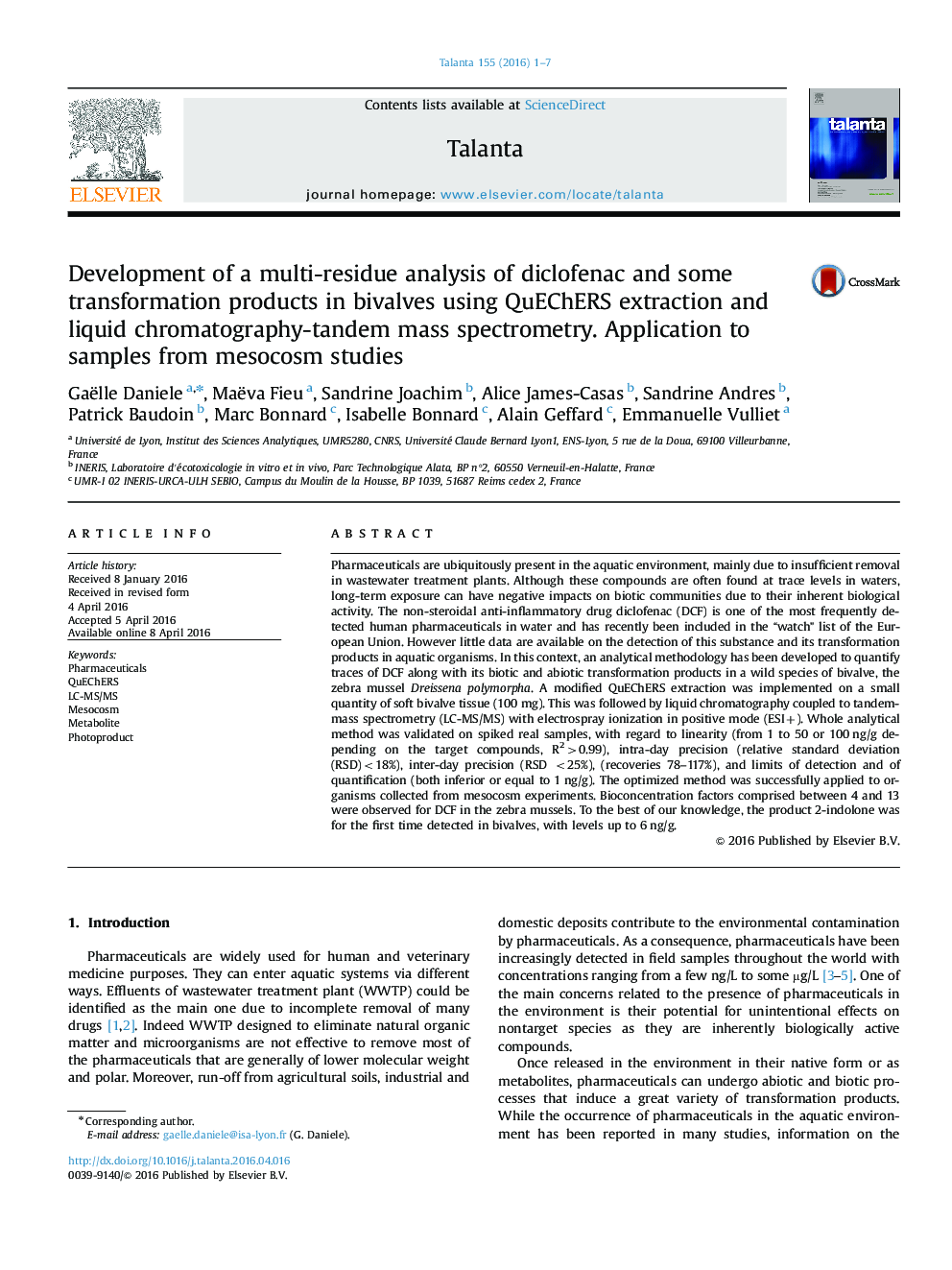| کد مقاله | کد نشریه | سال انتشار | مقاله انگلیسی | نسخه تمام متن |
|---|---|---|---|---|
| 1242406 | 1495780 | 2016 | 7 صفحه PDF | دانلود رایگان |

• A modified QuEChERS extraction and LC-MS/MS analysis on zebra mussels was done.
• Diclofenac along with nine transformation products were simultaneously analyzed.
• The validated method was applied to samples collected from mesocosm experiments.
• The detection of 2-indolone in bivalve samples was reported for the first time.
Pharmaceuticals are ubiquitously present in the aquatic environment, mainly due to insufficient removal in wastewater treatment plants. Although these compounds are often found at trace levels in waters, long-term exposure can have negative impacts on biotic communities due to their inherent biological activity. The non-steroidal anti-inflammatory drug diclofenac (DCF) is one of the most frequently detected human pharmaceuticals in water and has recently been included in the “watch” list of the European Union. However little data are available on the detection of this substance and its transformation products in aquatic organisms. In this context, an analytical methodology has been developed to quantify traces of DCF along with its biotic and abiotic transformation products in a wild species of bivalve, the zebra mussel Dreissena polymorpha. A modified QuEChERS extraction was implemented on a small quantity of soft bivalve tissue (100 mg). This was followed by liquid chromatography coupled to tandem-mass spectrometry (LC-MS/MS) with electrospray ionization in positive mode (ESI+). Whole analytical method was validated on spiked real samples, with regard to linearity (from 1 to 50 or 100 ng/g depending on the target compounds, R2>0.99), intra-day precision (relative standard deviation (RSD)<18%), inter-day precision (RSD <25%), (recoveries 78–117%), and limits of detection and of quantification (both inferior or equal to 1 ng/g). The optimized method was successfully applied to organisms collected from mesocosm experiments. Bioconcentration factors comprised between 4 and 13 were observed for DCF in the zebra mussels. To the best of our knowledge, the product 2-indolone was for the first time detected in bivalves, with levels up to 6 ng/g.
Figure optionsDownload as PowerPoint slide
Journal: Talanta - Volume 155, 1 August 2016, Pages 1–7